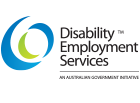
The world is slowly realising the importance of not only recognising the differences we all have as individuals but also celebrating them, inside and outside the workplace. Businesses play an important role in creating environments where our differences are normalised and spaces, systems and processes are catered to everyone. Equal, diverse and inclusive workplaces are good for business. You can read some of our employer success stories, here.
Hiring a diverse workforce will facilitate different methods of communication, collaboration, and leadership to balance out working styles and create a fluid and dynamic culture. Bringing together different minds, backgrounds, experiences, genders and ages will allow us to bring together different thought processes to solve more complex problems, together.
Not only is having a diverse and inclusive workplace important, but having ways to plan, innovate and measure diversity and inclusion in the workplace and its success is arguably more important. You might already invest time, money and effort on diversity and inclusion strategies but how do you know if this is resulting in a more diverse and inclusive workforce without tracking?
After all, what is the point of implementing strategies, if you are not willing to measure, adapt and change based on these?
This blog article will outline not only how to evaluate diversity and inclusion in the workplace, but how you can measure diversity and inclusion in the workplace as well.
Understanding Diversity and Inclusion
Diversity and inclusion may be the new buzz words in business, but, how do we actually know what they mean, and how they look in the workplace? A diverse and inclusive workplace is defined to be is a place where people from different backgrounds, cultures, abilities, genders and sexual orientations thrive. It is a safe space for everyone to contribute, no matter the path that allowed / facilitated them to get to this point.
Diversity and inclusion go far beyond the physical disability diversity that you may be thinking of. As a matter of fact, it’s likely you already employ someone living with disability as with nearly 4.4 million people – one in five Australians – living with some form of disability. Up to 90 percent are invisible or hidden, so you may not be aware of the expanse of people living with disability in your workplace.
Diversity comes in all shapes and sizes (literally). To truly embrace and reap the rewards of a diverse workforce, you need to reshape the way that you ‘see’ diversity.

Key Diversity and Inclusion Metrics to Consider
To gain rich data on diversity and inclusion within any workplace, qualitative and quantitative reviews will need to be conducted that touch on all aspects of the business, right from the beginning. This includes the recruitment and onboarding processes, team interviews, your website, all the way through to conducting exit interviews. You will not see positive diversity data without welcoming diversity from all areas of your business, especially within the recruitment process.
A crucial first step to achieving diversity and inclusion, is to first identify and understand the challenges that different marginalised groups may experience, and what challenges may arise because of their experiences. What processes currently work in their favour? What processes do not work in their favour? Put yourself in their shoes and think about how that would make you feel and engage within the workplace. To gain a full understanding of how you can adapt to your team, you can read both our client success stories, and employer case studies.
If you are looking to start with small steps, you can review the below systems and processes of the business and extract data where applicable. With this data, you will be able to see what you are capturing already, where you can extract more information, as well as where you can improve.
- Accessibility scores: How does your physical and virtual business front present? Are you accessible to everyone?
- Employee resource group participation rates: If you have employee specialist groups, what is the participation rate?
- Hiring metrics: Are your job descriptions accessible? Are you mentioning that you are an equal opportunities employer?
- Job satisfaction/employee happiness scores: Are you conducting regular and meaningful check in’s/reviews with your team members?
- Promotion rates: What do you leaders look like? Are they an accurate representation of your business?
- Pay equity and equality across positions within the business: Does everyone have equal opportunity to progress within the company?
- Retention rates of your diverse employees: Do you find that specific diverse team members are leaving the business? Has this been investigated?
- Employer branding: How do people perceive your business as a place to work?
- Exit interviews: Are you asking former team members how they felt working with the business? Did they feel welcomed and heard?
- Focus groups: Do you have a diversity and inclusion focus group? Has one been requested?
- Diversity Awareness Training: As a business have you undertaken diversity training to best support your diverse employees? You can register your interest to our atWork Australia Diversity Webinar sessions,
Techniques and Challenges for Data Collection and Analysis
Effective data collection and analysis are essential for deriving meaningful insights into diversity and inclusion within the workplace. Ensuring you have a tailored combination of qualitative and quantitative methods will lead to more rich data and insights.
Leverage technology, such as HRIS (Human Resources Information Systems) and diversity and inclusion analytics platforms to streamline your data collection and analysis processes, to enable easy identification of trends, patterns and areas for improvement more efficiently and effectively. Ensure you know what your rights are with collecting and analysing data by checking local privacy laws. For information in Australia, you can visit the Office of the Australian Information Commissioner here.
If you are not interested in leveraging technology, leverage your team, and their knowledge. If you have big diversity and inclusion plans, it might be worth investing in a specialised team member or department within the business to drive the campaign.
Once you have analysed your data and have your metrics available, you can benchmark to your industry insights, and if available, direct competitor data. The Diversity Council Australia has a range of data and research available on their website.

Implementing Changes Based on Data
Once data on diversity and inclusion metrics have been collected and analysed, organisations must take proactive steps to implement meaningful changes. What does your data tell you?
This may involve revising recruitment and hiring practices to attract a more diverse talent pool, offering professional development and advancement opportunities for underrepresented groups and enhancing diversity training programs to address specific areas of concern. Fostering a culture of inclusivity requires ongoing communication, collaboration and leadership commitment to drive meaningful change. By leveraging data-driven insights, organisations can create a more equitable and inclusive workplace where all employees can thrive.
Conclusion
Measuring diversity and inclusion in the workplace is a multifaceted endeavour that requires a combination of understanding, key metrics, techniques for data collection and analysis as well as overcoming challenges. By embracing diversity and fostering inclusion, organisations can unlock the full potential of their workforce and drive innovation, creativity and success. Through continuous evaluation, adaptation and action based on data-driven insights, organisations can cultivate a workplace culture where every individual feels valued, respected and empowered to contribute their best.
Interested in taking the next steps on your diversity journey and wanting to hire inclusively? atWork Australia can help all businesses; large and small, welcome talented people living with disability into their team at no cost. We provide guidance on available financial support, including generous wage subsidies, that will dramatically reduce your hiring costs. For more information or to get support to develop a more diverse and inclusive workplace reach out to atWork Australia.


